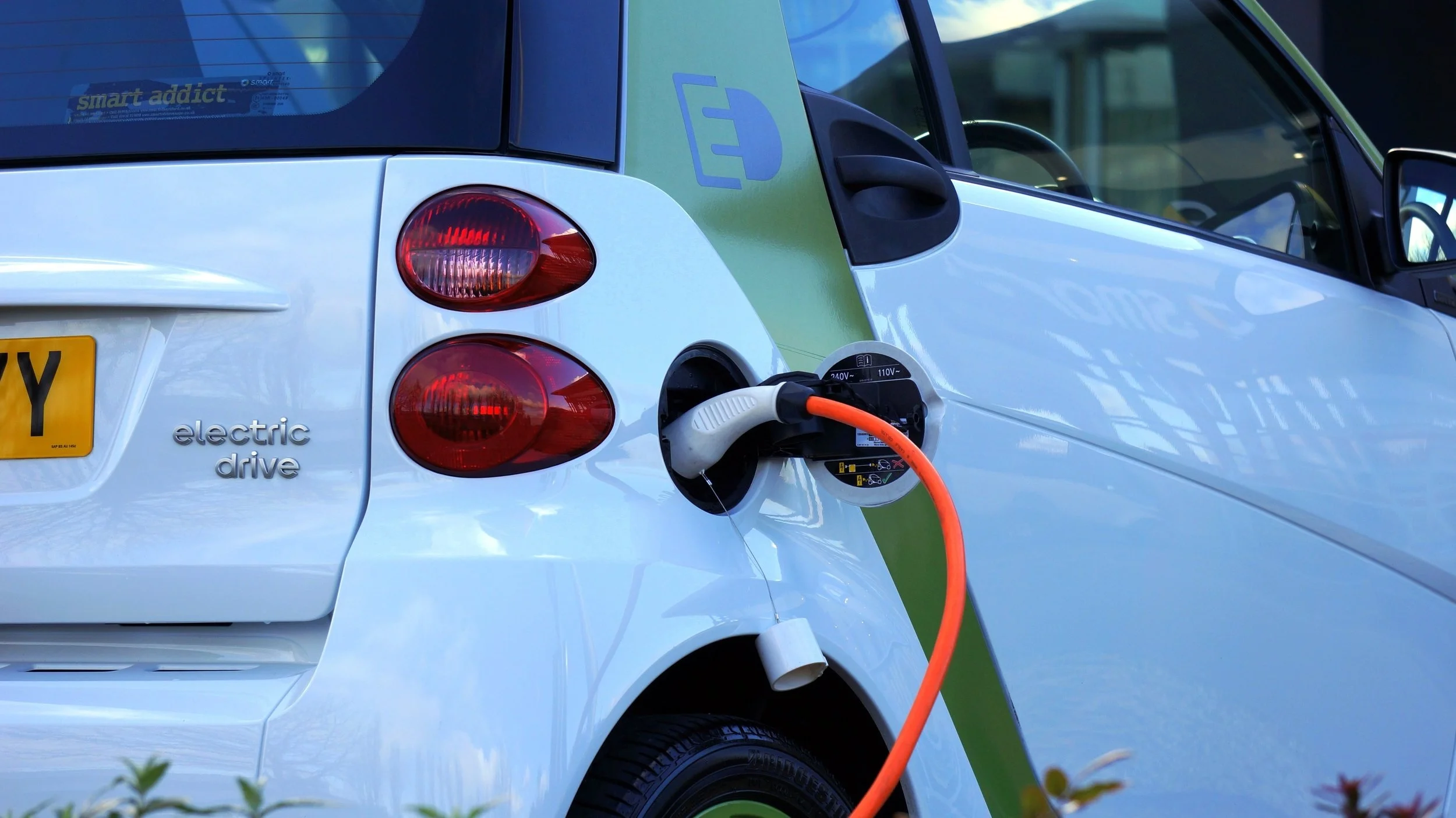Emerging Trends in the Transportation Sector
The transportation sector accounted for roughly 28 percent of the United States’ total greenhouse gas (GHG) emissions in 2016 and the majority of these emissions (60 percent) come from light-duty vehicles, like the car you likely drive to work every day. Given the significant share of national emissions that result from our daily driving habits and personal transportation activities, many cities and regional governments are exploring how to reduce transportation emissions through infrastructure planning and policy development. Investing in electric vehicle (EV) infrastructure, increasing vehicle emissions standards, and using financial tools to encourage less fuel consumption will ensure cleaner vehicles and fewer emissions. Meanwhile, planners and engineers are beginning to consider what the fabric of our cities will look like as transportation modalities shift and reliance on a personal vehicle, in urban areas at least, will hopefully diminish. We are keeping an eye on several emerging trends that are likely to shape and define how communities work towards reducing their transportation-related emissions.
Electric Vehicle Policies and Incentives
The growth of the EV market over the past few years has been slowly but steadily increasing and is expected to continue to grow more rapidly and at exponential levels in the coming years; Morgan Stanley predicts that 80 percent of vehicles sold worldwide will be electric by 2050. Based on consumer feedback, the biggest deterrents to purchasing an EV (after increased sticker price over a traditional internal combustion engine) is limited range and access to charging stations. A less-cited concern is that most EVs on the market today are smaller cars, not the SUVs and pick-up trucks that many American consumers prefer to drive. Rivian Automotive hopes to change that by releasing the first-ever fully electric pick-up truck on the market by the end of 2020 (and Tesla plans on a pick-up prototype by mid-2019). Additionally, the public sector is investing in EV infrastructure that will hopefully mitigate consumer concerns about range anxiety and increase the speed of EV adoption. The State of Colorado’s EV Plan, released in January of this year, calls for building out the network of Level 3 charging stations (Level 3 stations are those that can provide a full charge in roughly 15 minutes) across the state and working cooperatively with other states in the Intermountain West Electric Corridor (which includes the states of Arizona, Colorado, Idaho, Montana, Nevada, New Mexico, Utah, and Wyoming and focuses on the main interstates in the region) to ensure a consistent user experience at these stations.
To further support EV adoption, cities and local governments are developing policies and incentive programs that will green their own fleets and make transitioning to an EV an easy choice for the average consumer. In November, Boulder County became the first local government in the country to adopt a GoEV Resolution that supports community-wide vehicle electrification. The resolution includes commitments to electrify the County’s fleet, support broad development of charging and EV infrastructure throughout the County, work with partners to electrify taxi and ride hailing fleets, and work with the Regional Transportation District and the Boulder Valley and St. Vrain Valley School Districts to electrify their transit and school bus fleets. New York City, Sacramento County, and other communities are also working towards transitioning their transit and school bus fleets to electric, and New York City’s three largest airports are also electrifying their diesel fleet. These organizations were encouraged by both the air quality and emissions reduction benefits of the electric vehicles, as well as the significant economic benefits of the switch. While the electric buses cost more upfront, transit operators are paying roughly 19 cents per mile to operate the EV buses, while a traditional diesel bus costs roughly 82 cents per mile. With 480,000 yellow school buses and another 65,000 public transit buses on the road currently, the potential to drastically cut emissions from these vehicles by replacing them with all-electric alternatives is significant. Of course, these emissions reductions are contingent upon the electric vehicles being charged on an electricity grid that is primarily carbon-free, which many cities are also working towards.
Vehicle Standards and Emissions Cap Programs
Many state governments are adopting or considering policies that will reduce vehicle emissions. In November 2018, Colorado became the most recent state to adopt California’s Low-Emissions Vehicle standards, joining 12 other states and the District of Columbia; this brings the share of new automobile purchases impacted by these regulations to 40 percent of the market. Colorado’s new standards will go into effect for the 2022 model year. Vehicle emissions standards have traditionally been effective in improving air quality and ensuring that vehicles become cleaner over the years, but some states are interested in how to directly target transportation emissions reductions through policy.
Nine Northeast and Mid-Atlantic states and the District of Columbia have collaborated through the Transportation and Climate Initiative (TCI) to hold focus sessions and engage with hundreds of stakeholders throughout 2018, resulting in an announcement that the jurisdictions will design a regional low-carbon transportation policy proposal that would reduce transportation emissions through a cap-and-invest program and other pricing mechanisms. While many of the specific details of these programs are still in the works, the member states of TCI intend the program to be one in which the use of heavily polluting fossil fuels will incur a fee; the proceeds of the program would be provided to the member states to invest in low-carbon and more resilient transportation infrastructure systems. As the imposition of a fuel fee on producers and distributors would likely be passed onto the consumer at the pump, the TCI states will conduct further analysis and invite comments from stakeholders to ensure that the burden of this policy does not negatively impact low-income populations and creates opportunities for jobs and economic growth. TCI states may also consider the design and implementation of complimentary policies regarding land use and infrastructure planning to ensure the designed programs have the greatest positive benefit in terms of emissions reductions possible.
Autonomous Vehicles, Ride Sharing, and Modality Shifts
While there is quite a bit of debate about what the urban landscapes of our future will look like and how people will travel to and through them, there is general consensus that the rise of autonomous vehicles (AVs), ride sharing, and alternative mobility options (like e-bikes and e-scooters) will fundamentally change how we move through and interact with our built environments. Given the relatively rapid transition that our transportation infrastructure is likely to experience, many communities are not prepared for the impact of AVs and modality shifts on the fabric of their urban cores—in a review of the transportation plans of the 68 most populous cities in the U.S., only 6 percent of these communities have transportation plans that address self-driving cars, and the vast majority had planning horizons for 2030 and beyond.
Most projections show that fully automated vehicles will be available to the consumer market by 2025, with on-road testing already occurring in some cities; between this and the continued increase in adoption of ride-hailing (e.g. Lyft, Uber) and ride-sharing (e.g. UberPool and LyftLine) transportation services among urban residents, cities and developers are re-thinking the urban landscape. It is clear that the way that people get around is changing, and even models of traditional personal vehicle ownership are evolving through personal car rental services like Turo (think AirBnB for your car). In some cases, cities are relaxing the parking requirements for new urban developments and architects are designing buildings with parking structures that can be easily converted to office or retail space once the need for parking is diminished. This could mean that urban land previously dedicated to parking can be redeveloped more densely once that parking isn’t needed; alternatively, the more pleasant commute in a self-driving car (as opposed to one you have to drive yourself) may mean that people will be willing to travel further for work and other activities, further increasing urban sprawl.
In addition to changing patterns of vehicle use, cities and states are trying to understand how to regulate newer multi-modal transportation options like electric scooters and bikes. These modes are gaining popularity among young people and urban dwellers specifically, and the option to use multiple modes of transportation to reach a destination (e.g. scooter to a bus stop, ride the bus, pick up a ride share to the final destination) is beginning to outweigh the benefits of personal vehicle ownership for many people. While shifting from owning a personal vehicle to ride-hailing alone will not lead to a reduction in emissions, shifting the way that people get around and specifically increasing the use of ride-sharing transit services and multi-modal options will likely lead to not only reduced transportation emissions, but also reduced road congestion. In order to increase adoption of these modes, which generally may require more effort and time on the part of the individual, cities and regional governments can work to develop carrot and stick policies that encourage more people to reduce their time in a single occupancy vehicle and discover alternative transportation options.
As transportation activities represent a huge share of global GHG emissions and therefore contribute significantly to climate change, the potential to mitigate this impact through smart policy and planning practices at the local level cannot be understated. The team at Lotus loves to explore innovative and impactful transportation policies and projects that will reduce GHG emissions with our clients, and we remain committed to providing the most up-to-date and relevant insights on policies, projects, and programs that will have a net positive impact on community emissions. Using localized data and information unique to each community we can help to develop policies and programs, model the impact of these efforts, and support the implementation of effective emissions reduction activities.



